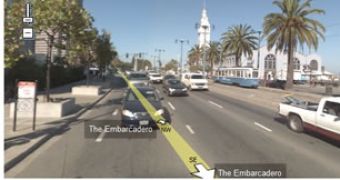Paris was the first European location chosen by Google to be part of the Street View project and Tour de France was a great opportunity for a July launch of the new online service coming from the search giant. However, now Street View is going to Australia and Japan, despite the fact that nothing happening there at the moment is of global interest, although the fact that we're talking about two of the most developed countries on Earth and that up to now Street View covered only America and Europe may be the reason behind Google's undertakings.
Tokyo, Osaka, Kyoto, and Kobe are just some of the Japanese cities that are no longer kept hidden from the world. Images caught with cameras attached to moving vehicles combine into small videos, as users follow a certain walking direction. Although the images are not tridimensional, choosing a direction helps users feel that they can follow what happens on any given street, at any time.
Few of the Australian cities that are now part of the Street View network are Sydney, Perth, and Melbourne. Google also included other 30 U.S. cities to its map, with New Orleans, Baton Rouge, El Paso, Wichita, Savannah and Colorado Springs among them. Users who take a really close look are promised a surprise hidden in the U.S. new imagery.
Indeed, Street View works as a virtual travel agency and offers people the possibility to "visit" places that they would probably never have seen otherwise. But many critics are also thinking of the other people, those who are caught on camera without their consent. To prove that Street View is a bit too invasive, National Legal and Policy Center used the online service to make public some of the private information of a Google official. As we reported, the plate number, the name of the company that offers landscape services, and even the shortest road the official can take to the office, were fully disclosed.

 14 DAY TRIAL //
14 DAY TRIAL //